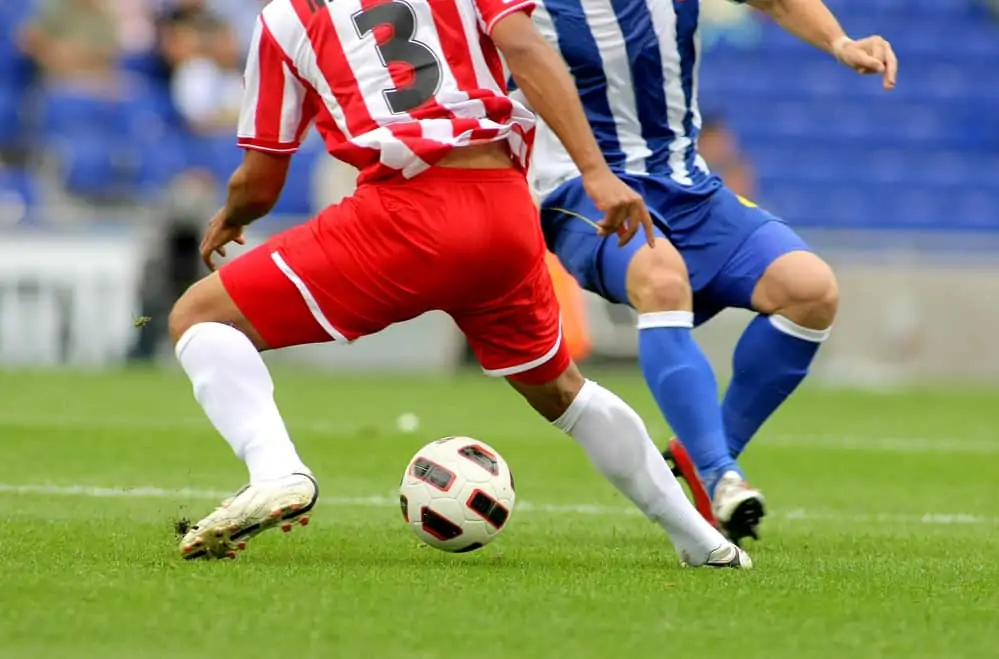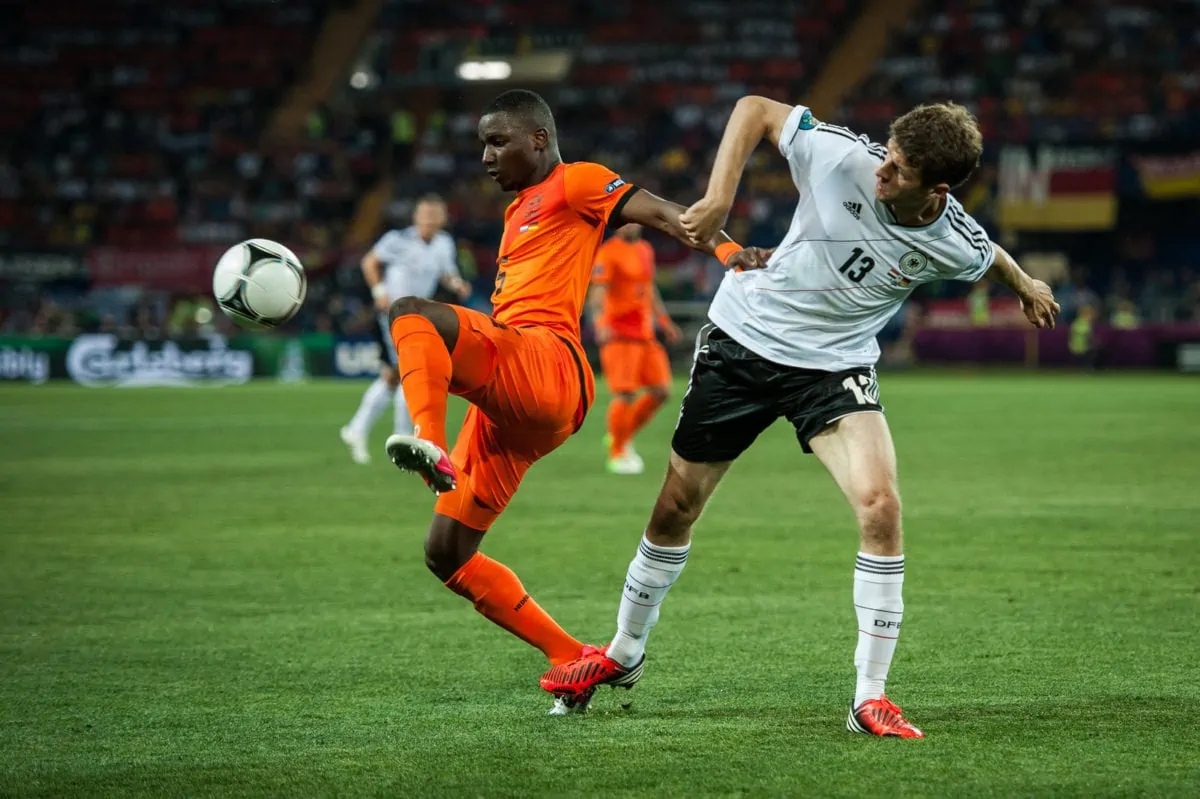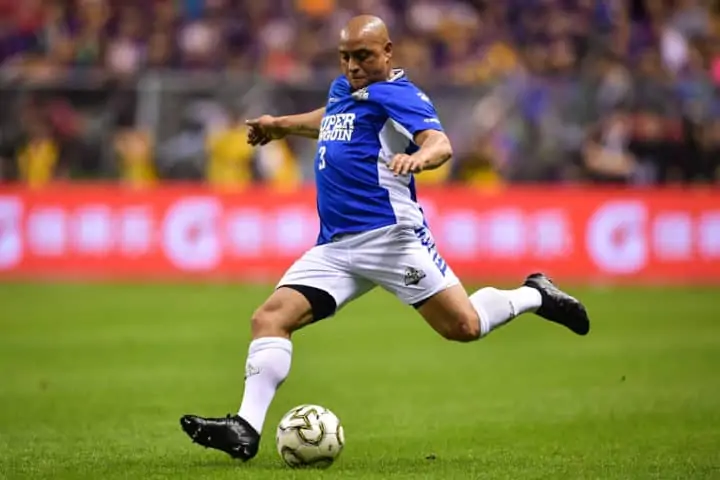Soccer players have large leg muscles due to the nature of the sport. It’s essential to have strong quads, hamstrings, and calves to get the best out of your body.
It’s a must to know how leg muscles can help you if you’re a soccer player, and today we’ll mainly talk about calves and their importance.

Are Calves Important for Soccer?
Calf muscles are some of the most important body parts regarding soccer functionality. If you’re trying to improve your game, then training your calves might get you there.
You will notice large calf muscles on players crossing and shooting all the time. One of the best examples is Xherdan Shaqiri, his calves are one of the largest in world soccer, and yes, he has a pretty powerful strike.
There are lots of essential things that calf muscles help you with within soccer, but they mostly influence:
- Quick Change of Direction
- Leg Durability
- Jumping
Change of Direction
If you’re a soccer player, you’ll want a quick change of direction. All positions in soccer can benefit from being able to do this properly.
Even goalkeepers can get something useful out of this if someone misplaces a pass to them and they need to reposition quickly.
Leg Durability
Calves are usually where you’ll first notice fatigue while playing soccer. That’s why functionally strong calf muscles will improve your durability throughout the game.
You’ll usually see players stretching their calves out in extra time, which is when it gets a bit tougher for the players.
However, some players coming back from an injury might not be fully fit yet and will experience leg cramps even quicker than that.
Jumping
Jumping isn’t crucial for all players, but it’s an excellent skill in most positions.
The traditional striker in soccer will want to have excellent jumping ability and a significant height to get good heading opportunities within the box.
Centerbacks will deal with strikers in most aerial battles and benefit from high-jumping just as much as they do.

Does Playing Soccer Make Your Legs Bigger?
A short answer to a question like this is yes, playing soccer can make your legs bigger, but is it optimal for gaining muscle?
You can’t gain mass muscle from playing soccer since it is an aerobic sport, although it will gain you some muscle.
We should also mention what fundamental moves you do in soccer that can gain muscle:
- Kicking the ball
- Sprinting
- Jumping
Kicking the ball
This is pretty much the most important thing in soccer. Passing, shooting, crossing, or kicking the ball is the one thing you want to do again and again to gain leg muscles.
Pretty much all leg muscles are affected by kicking the ball, quads, calves, glutes, are just some of them, and they’re all very important if you want to up your game.
Having a strong core is also important for shooting power, so don’t forget to do the ab exercises you planned.
Sprinting
Sprinting will target the same muscles as kicking the ball, just not at the same intensity. If you’re sprinting downhill, you’re going to target your quads more than your hamstrings, while going uphill will do the reverse.
While kicking the ball will focus more on your core and quads, sprinting will drain your calf muscles.
Jumping
Just like kicking the ball and sprinting, jumping will affect the leg muscles and core. However, it’s the type of jumping you’d want to be doing to target a specific area.
Jumping with extended legs will target your calf muscles a lot. This type of jumping is usually of small amplitude but targets your Achilles and calves perfectly.
While jumping out of a squat position will focus on your quads more. Adding weights on your legs and jumping on a high box can greatly increase the difficulty.

What is the optimal way to get leg muscle mass?
Getting lots of leg muscle mass can be counterproductive while playing soccer, but doing so in the right proportion will help you improve your game massively.
Let’s mention some of the top exercises for gaining muscle mass:
- Squats
- Calf Raises
- Deadlift
Squats
Squats are the most optimal exercise when it comes to leg muscles. If you’re planning to improve leg muscles, you need squats.
Squats will target almost every leg muscle group, although they will focus on quads and glutes the most. There are lots of variations regarding squats.
Adding weight is always good if you can handle it, but don’t overdo it since it can slow down your leg movement, which won’t help you at all.
Keeping your legs straight will focus more on the quads while pointing the fingers a little bit to the outside can target your glutes more.
Calf Raises
Calf Raises are the exercise you want to try out if you want your calf muscles to grow, pretty much self-explanatory.
Some of the variations with Calf Raises would be adding weights and doing them on one leg, and if you want to make it difficult, you can try doing small jumps.
Deadlift
The hamstring and lower back are the muscle groups targeted by deadlift exercises. Keep in mind that a good warm-up of those muscles will prevent injury.
You don’t want to put more weight than you have to because it can be risky. My favorite variation of the deadlift exercise is the Single-Leg Dumbbell Deadlift.
This exercise will burn your hamstrings but also focus a lot on the core and the balance of your body, which is essential in soccer.
Sources:
- https://soccermentality.com/does-playing-soccer-make-your-legs-bigger/
- https://livehealthy.chron.com/physical-characteristics-leg-muscles-soccer-player-3852.html
Joel is a seasoned soccer journalist and analyst with many years of experience in the field. Joel specializes in game analysis, player profiles, transfer news, and has a keen eye for the tactical nuances of the game. He played at various levels in the game and coached teams - he is happy to share his insight with you.



